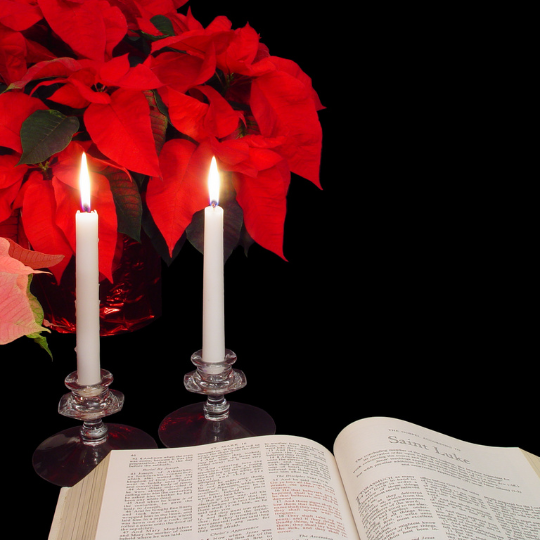
Deck the Halls – Popular Christmas Plants
Table of Contents
What a better way to usher in the festive spirit than by adorning our homes with the vibrant colors and fragrances of Christmas plants? From traditional evergreens to cheerful blooms, these botanical wonders add a touch of nature’s magic to our celebrations. Join us as we explore the most popular indoor plants that have become cherished symbols of joy and warmth during this special time of the year.
Poinsettias (Euphorbia pulcherrima)
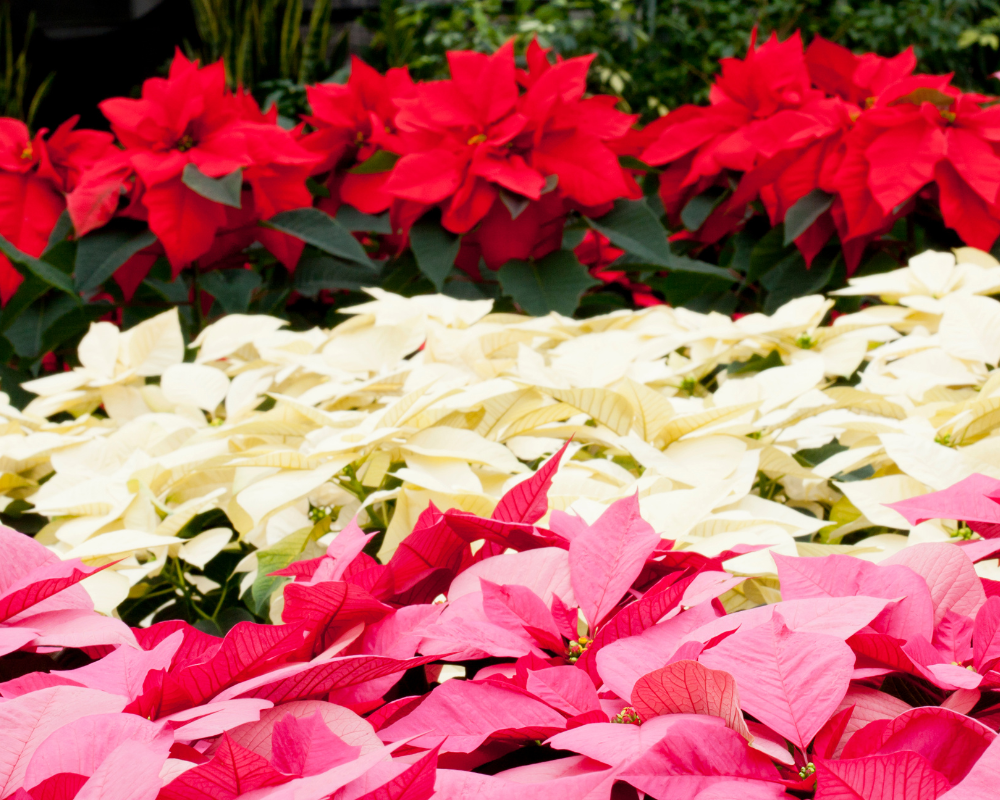
Undoubtedly the most iconic of all Christmas plants, the Poinsettia plants take center stage in homes, offices, and public spaces alike. With its stunning red flowers and deep green foliage, this plant has become synonymous with the season and a holiday favorite. The plant also comes in various hues, including white and pink, adding versatility to the festive season.
The vibrant and festive Pointsettia, originating from Mexico, it was introduced to the United States in the 19th century and has since become a staple of Christmas-time decoration worldwide. Its striking red bracts create a stunning display that brightens up any room or even small spaces during the holiday season.
There is more to this beautiful festive plant than just its decorative appeal. The Poinsettia symbolizes purity, good cheer, and success—a perfect embodiment of the joyful holiday spirit of Christmas. Recent research has also revealed its potential health benefits, including its ability to purify indoor air by removing harmful toxins. This adds an intriguing dimension to its reputation as mere holiday houseplants.
Christmas Trees (Various Species)
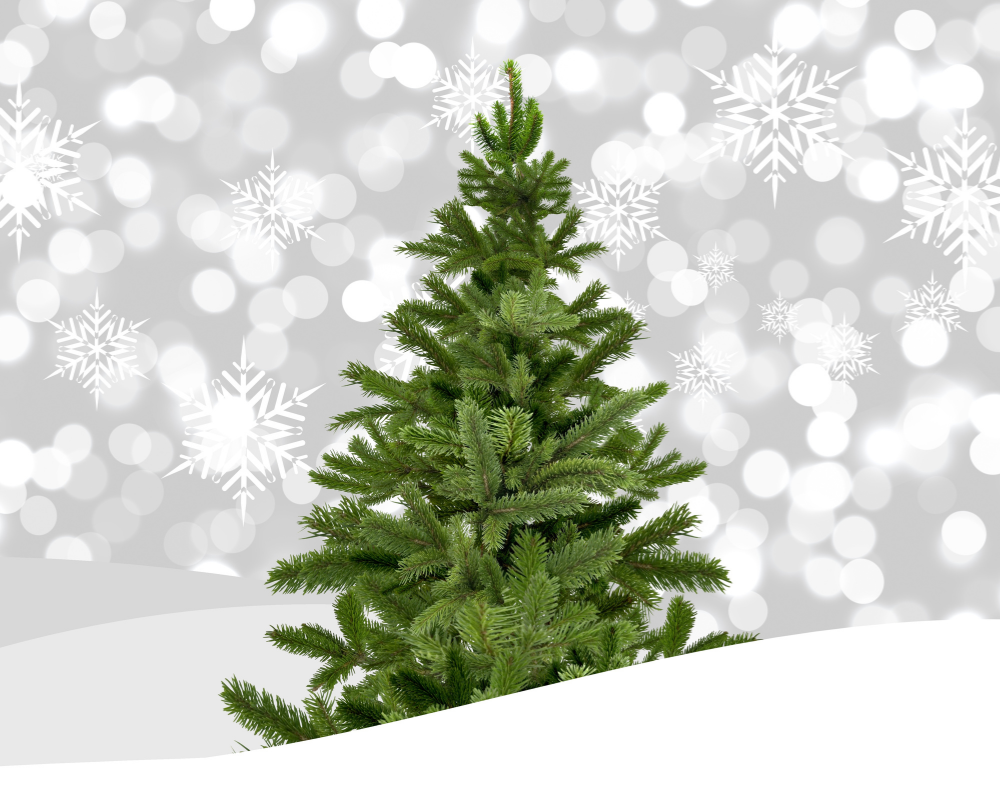
No list of popular Christmas plants would be complete without mentioning the star of the show – the Christmas tree. Whether it’s a classic spruce, fir, pine, or a more unconventional choice, the Christmas tree symbolizes tradition, family, and the spirit of giving. Families often gather to decorate their trees with lights, festive ornaments, and tinsel, creating a visually enchanting finishing touch for the holiday festivities.
Mistletoe (Viscum album)
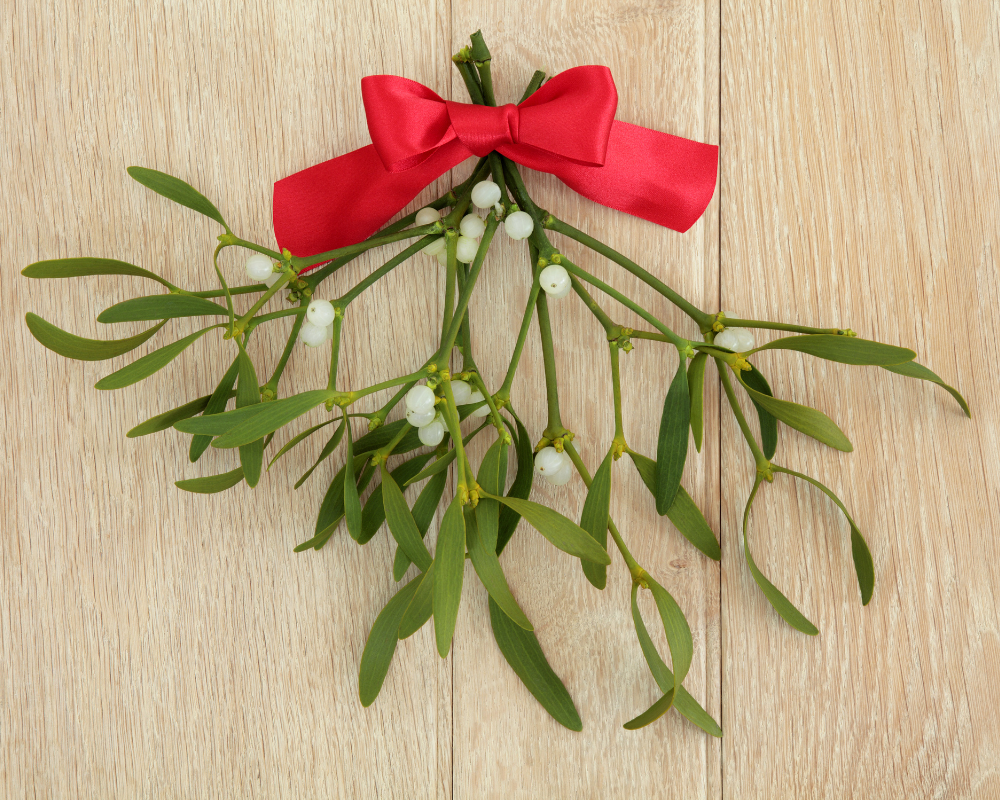
Steeped in centuries-old folklore and tradition, Mistletoe, alongside red roses has earned its place as a symbol of love and goodwill during the Christmas season. Hanging a sprig of mistletoe is said to bring good luck and holiday cheer encouraging kisses beneath its boughs. This plant, with its glossy green leaves and white berries, adds a touch of romance and mystery to the holiday decoration and festive atmosphere.
Its parasitic nature led ancient cultures to view it as mystical and sacred, often associating it with fertility rituals and protection from evil spirits. Mistletoe also possesses medicinal properties that have been utilized for centuries, including the treatment of ailments such as epilepsy and infertility.
In addition to its historical and cultural significance, mistletoe also plays a crucial ecological role in various ecosystems. As a Hemiparasitic plant, it partially relies on its host tree for water and nutrients while still producing its energy through photosynthesis. This unique relationship has profound effects on native habitats and forest dynamics, influencing tree growth patterns and providing habitats for diverse wildlife.
Holly (Ilex aquifolium)
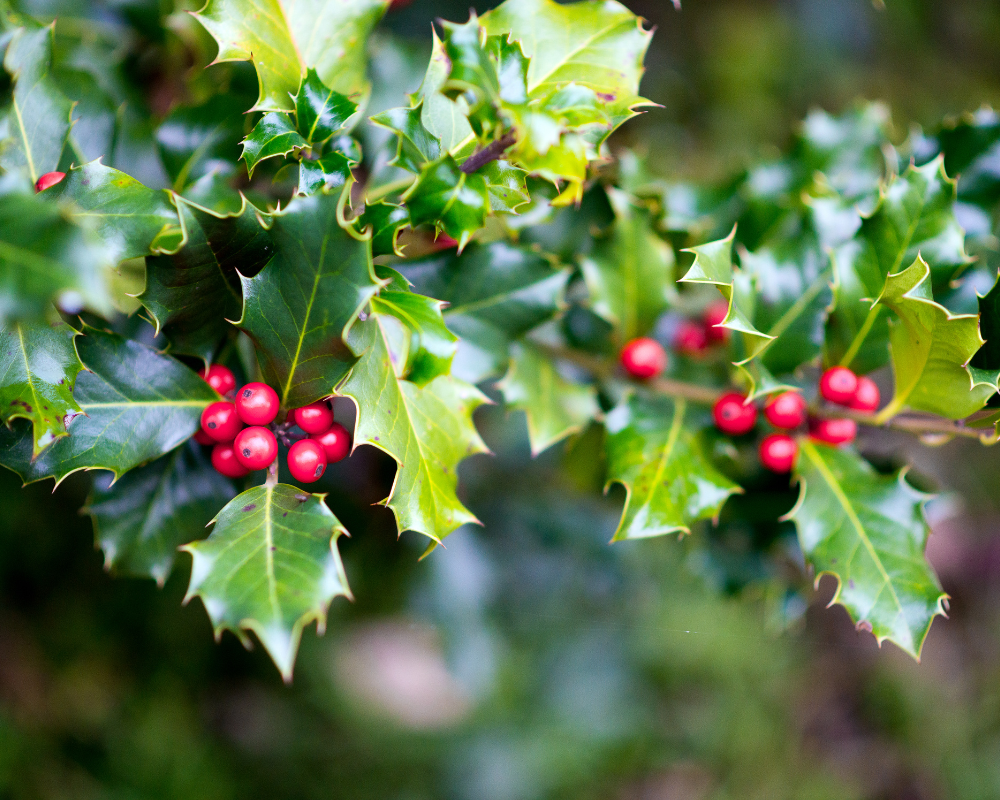
Known for its distinctive spiky leaves and bright red berries, Holly has been a symbol of seasonal spirit since ancient times. Traditionally associated with protection and good fortune, holly branches are used in wreaths, garlands, and table floral arrangements. The position of its vibrant red berries against the glossy green leaves makes Holly a timeless and elegant addition to traditional Christmas decor.
Beyond its decorative use during Christmas time, the holly plant also holds a rich symbolic significance in various cultures. In Celtic mythology, the common name Holly was seen as a powerful symbol of protection and eternal life. Holly has also been used medicinally for centuries. Its leaves and berries have been touted for their potential health benefits, from promoting digestion to providing anti-inflammatory properties. This lesser-known aspect of such holiday plants as Holly, sheds light on its versatility and value beyond just being a decorative Christmas plant.
Christmas Cactus (Schlumbergera spp.)
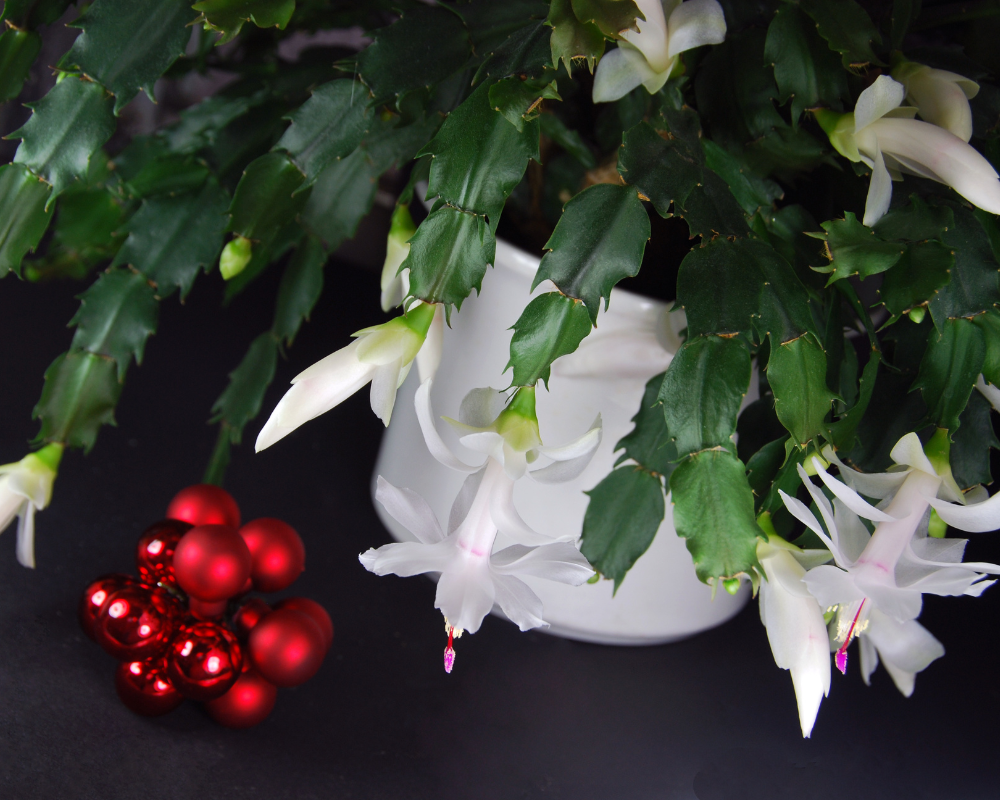
For those who prefer a more subtle yet equally festive touch, the Christmas Cactus is a great addition and an excellent choice. The Christmas flowers also known as Schlumbergera, is a unique and beautiful plant that adds a touch of festive charm to any home during the holiday season. Unlike traditional cacti, this plant originates from the tropical rainforests of Brazil rather than the desert, making it a fascinating addition to your Christmas plant collection. Its distinctive blooming period in late November and December winter months gives it its festive name, and its colorful shades of pink, red, white flowers, and even purple make it a delightful sight to behold.
One interesting aspect of Christmas Cactus plants is their ability to adapt to various environments, making it an ideal houseplant for those seeking low-maintenance greenery with a seasonal flair. Its segmented leaves store water efficiently, allowing it to withstand periods of neglect in well-draining soils without losing its vibrant appearance. Additionally, this resilient plant can thrive indoors or outdoors if provided with the right conditions and proper care. Whether as a thoughtful gift or a cheerful addition to your holiday greens decor, the plant is sure to bring Christmas cheer and beauty into your home during this special time of year.
Conclusion
As we revel in the magic of the holiday season, these popular Christmas plants remind us of their elegant look and the resilience of nature. As you decorate your space this Christmas, consider incorporating these beloved plants to create a decorative pot and atmosphere of warmth, joy, and natural beauty. After all, ’tis the season to be surrounded by the wonders of the botanical world!



